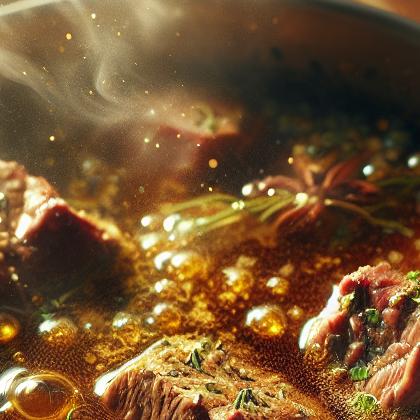Meat Stock

Meat is animal flesh that is eaten as food. Humans are omnivorous, and have hunted and killed animals for meat since prehistoric times. The advent of civilization allowed the domestication of animals such as chickens, sheep, pigs and cattle, and eventually their use in meat production on an industrial scale.Meat is mainly composed of water and protein, and is usually eaten together with other food. It is edible raw, but is normally eaten after it has been cooked and seasoned or processed in a variety of ways. Unprocessed meat will spoil within hours or days. Spoilage is caused by the practically unavoidable infection and subsequent decomposition of meat by bacteria and fungi, which are borne by the animal itself, by the people handling the meat, and by their implements.Meat consumption varies worldwide, depending on cultural or religious preferences, as well as economic conditions. Vegetarians choose not to eat meat because of ethical, economic, environmental, religious or health concerns that are associated with meat production and consumption.Most often, meat refers to skeletal muscle and associated fat and other tissues, but it may also describe other edible tissues such as offal. Conversely, meat is sometimes used in a more restrictive sense – the flesh of mammalian species (pigs, cattle, lambs, etc.) raised and prepared for human consumption, to the exclusion of fish and other seafood, poultry or other animals.
Meat stock Pairs With:

Meat stock Properties:
| Food Property | Type | Description |
|---|---|---|
| Flavor Profile | Umami | Meat stock has a rich umami flavor that comes from the natural glutamates in the meat and bones used to make the stock. |
| Texture | Moisture | Meat stock has a rich and gelatinous texture due to the collagen and gelatin that are extracted from the bones during the cooking process. |
| Nutritional Value | Macronutrients | Meat stock is high in protein, as it is made from simmering meat and bones in water, which extracts the protein from the muscle fibers and connective tissues. |
| Micronutrients | Meat stock is a good source of minerals like iron, zinc, and magnesium, which are released from the bones and meat during the cooking process. | |
| Aroma | Volatile Compounds | Meat stock has a savory and meaty aroma that comes from the cooking process, where the flavors and aromas of the meat and bones are extracted into the liquid. |
| Chemical Composition | Water Activity (aw) | Meat stock has a low water activity level, which helps preserve the stock and prevent microbial growth. |
| Cooking Behavior | Heat Conductivity | Meat stock has good heat conductivity, which allows it to heat evenly and infuse dishes with flavor during the cooking process. |
Food Pairing App - Version 1.2.0
